Being able to develop an exhibition about time means playing with the rigid whip on which past, present and future stand, and on which thoughts in motion confront with each other. It is an even rarer virtue to be able to set the moment of thought with a work of art, since it is customary to think that imagination is most intimately concealed in the stop[1]. The curators Benedetta Monti and Niccolò Giacomazzi have successfully managed to dominate this nerve with a certain fluency presenting the second edition of the Festival Vacunalia, this year entitled Il tempo scortese (The unkind time), scheduled from 3rd September to 1st October, 2022, and set up in Vacone (Rieti, Italy), with artworks by artists Verdiana Bove, Martina Cioffi, Valerio D’Angelo, Roberto Maria Lino, Pietro Moretti and Yuxiang Wang.
The creations are exhibited in the village as a motionless explosion, capable of sharing unexpected affinities according to a free and analogical norm. However, the strength of the project lies in the careful choice of the above-mentioned curators, who have been able, with determination and diligence, to devise an exhibition itinerary that does not present any moment of weakness in terms of layout or content. Furthermore, enriching the exhibition is the publication by DITO Publishing: an original cataloguing idea enhanced by textual contents from which the singular critical identity of Monti and Giacomazzi emerges.
Among the exhibited artworks, Yuxiang Wang’s installation stands out for its ideational subtlety and the suffused sublime character, expressed as a mechanical and gentle modification on the counting of time, which is altered by the brushing of the town’s clock pendulum against a water surface. The work, in other words, is characterized by its deliberately experimental nature and the practical commitment in playing with the associative aspect of the sound and visual element of the chiming of the clock. That water touched by the pendulum is visually fixed in the form of the concentric circles present in Pietro Moretti’s hermetic watercolors, meticulously arranged in Vacone’s showcase. Thus, the visitor, for the need of pausing to view the contents in the vitrine, discovers Moretti’s diluted painting, which imposes as an interrogation on the foundations of time and proximity. This way the artist fixes, with a rapacious eye, the interiors of the subdued and indefinable atmosphere, while devising a singular transcendental quest, perpetually poised between thought and physical breath.
Committing a gentle temporal anachronism, Martina Cioffi devises an intriguing sculptural arrangement that regulates the expressive space of the village’s ancient basin dedicated to the goddess Vacuna – the Sabine divinity of water and woods. The artist conceives the pool for its ancipital nature, so that the two sculptures depicting protuberances of water-spurting breasts become active parts of an imagined body. At the sight of this artwork it vividly emerges the desire to consider it a permanent installation for the village, precisely because the artist has been able to see the myth of Vacone, knowing how to grasp its imaginative dimension, which is never fantastic or fanciful, but it is real and carnal. Linked by a secret affinity, follows Verdiana Bove’s installation with its chthonic and mysterious aspects, aiming at demonstrating a morphological and typological gaze towards visual testimonies, depicting fairy-tale and surreal images. Thus, two pictorial “sinopias” hint at scenes of convivial life, with a breezy-looking tone painting exhaling a fresh and never restrained light. Bove, in other words, transcends the time of memory by placing herself behind the color, decanting it, pushing it forward until it becomes the screen of a visual manifesto.
Differently, with Valerio D’angelo the sensorium is subjected to camouflaged perceptual stimuli in the village’s belvedere square, where artworks are arranged according to the element of dispersion. The observer, who is offered various sculptural glimpses, needs to stop his thoughts in order to understand whether the works are an integral part of the landscape and, in this condition of visual instability, the doubt is transformed into the form of intuition: a conscious subjectivity that can only mature on site, while looking at these very same installations. Whereas, Roberto Maria Lino’s piece intends the artwork as an exchange of relationships with space, as well as a testimony ready to record the mutations. The work is attractive for its stereometric character, as it seems to be visually narrating a logical algebraic scheme in which the geometric shapes are composed according to a concentrated, but also dispersed, totality, which is captured in the instant in which the cloth detonates and collapses, unfolding in the open air.
Vacunalia, as a whole, stands as a successful interpretative exercise of an historical place, an happy “thallus”, in other words, from which thinking about art in relation to an unusual common space of suspended time sprout into being. A complicated theme that art, as well as Vacone, are branded, just as Charles Baudelaire intended when he stated that «our originality comes from the stamp that time imprints on our sensations[2]».
Maria Vittoria Pinotti
Info:
Various artists, Vacunalia, Il tempo scortese (Vacunalia: the unkind time)
curated by Niccolò Giacomazzi and Benedetta Monti
03/09/2022 – 01/10/2022
vacunaliafestival
[1] Refer to, Emiliano De Vito, La distruzione immobile, in Erwin Panofsky, Fritz Saxl, La «Melencolia I» di Dürer. Una ricerca storica sulle fonti e i tipi figurativi, Quodlibet, 2020, p. 291.
[2] Roberto Calasso, La Folie Baudelaire, Gli Adelphi, 2010, p. 38.
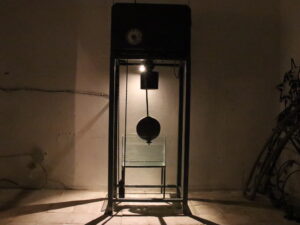 Yuxiang Wang, Vacava, 2022. Water, iron, glass, environmental dimensions. Ph. Massimiliano Podestà, courtesy the artist and Vacunalia
Yuxiang Wang, Vacava, 2022. Water, iron, glass, environmental dimensions. Ph. Massimiliano Podestà, courtesy the artist and Vacunalia
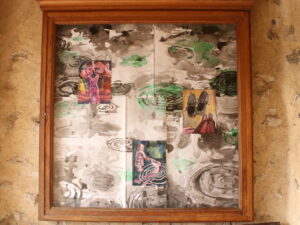 Pietro Moretti, Allo sbocco della conversazione, 2022. Watercolours on paper Hanhnemuele 425 Gsm, cm 32 x 24 each. Ph. Massimiliano Podestà, courtesy the artist and Vacunalia
Pietro Moretti, Allo sbocco della conversazione, 2022. Watercolours on paper Hanhnemuele 425 Gsm, cm 32 x 24 each. Ph. Massimiliano Podestà, courtesy the artist and Vacunalia
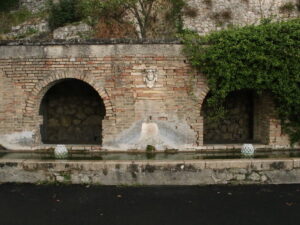 Martina Cioffi, Dea Vacuna, 2022. Raku ceramics, cm 30 x 30 x 42. Massimiliano Podestà, courtesy the artist and Vacunalia
Martina Cioffi, Dea Vacuna, 2022. Raku ceramics, cm 30 x 30 x 42. Massimiliano Podestà, courtesy the artist and Vacunalia
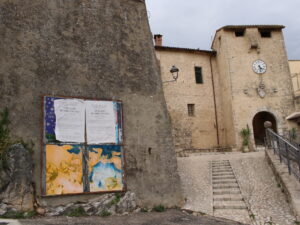 Verdiana Bove, Chiesa d’oro, 2022. Oil on paper, cm 100 x 80 each. Ph. Massimiliano Podestà, courtesy the artist and Vacunalia
Verdiana Bove, Chiesa d’oro, 2022. Oil on paper, cm 100 x 80 each. Ph. Massimiliano Podestà, courtesy the artist and Vacunalia
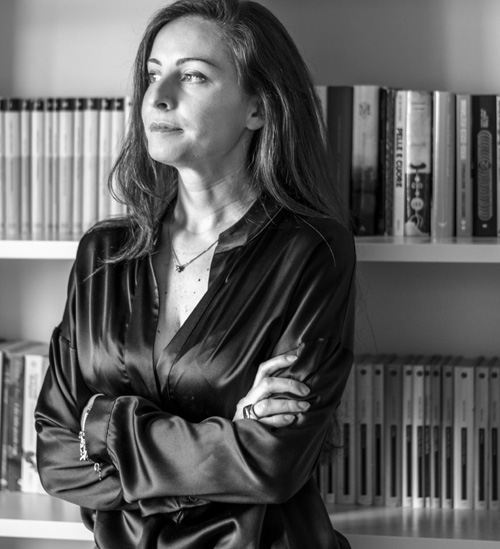
Maria Vittoria Pinotti (1986, San Benedetto del Tronto) is an art historian, author, and independent critic. She currently is the coordinator of Claudio Abate’s photographic archive and Manager at Elena Bellantoni’s Studio. From 2016 to 2023 she was the Gallery Manager in a gallery in the historic center of Rome. She has worked with ministerial offices such as the General Secretariat of the Ministry of Culture and the Central State Archive. Currently, she collaborates with cultural sector magazines, focusing on in-depth thematic studies dedicated to modern and contemporary art.



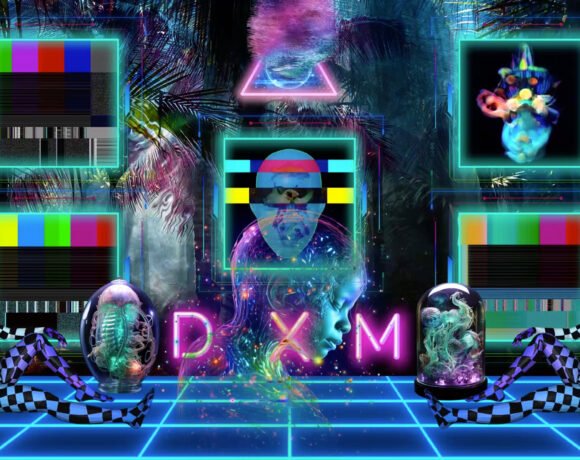


NO COMMENT